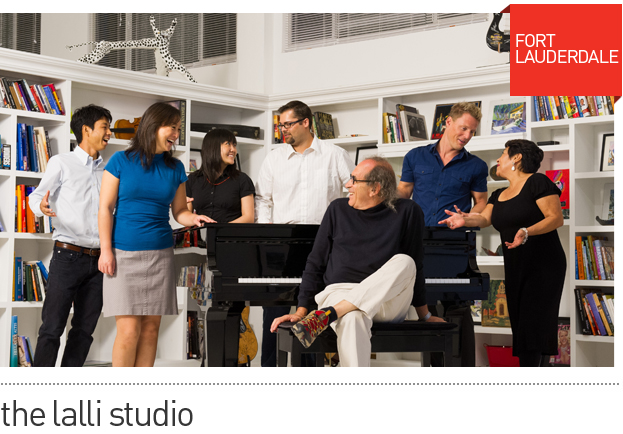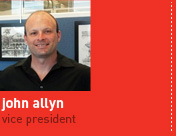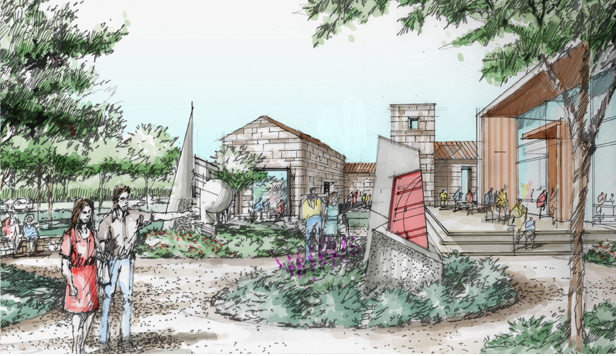



There are few elements as essential to life as water. As a significant commodity in both natural and created settings, water provides a diverse range of aesthetic and recreational opportunities for new developments. Its sound, motion and cooling effect have universal appeal. It connotes refreshment and stimulates verdant growth. With its playful and therapeutic qualities, water is a resource we are forever trying to preserve, conserve, clean and reuse. Given the increasing emphasis on environmentally sensitive approaches to living, working and playing, water has become a critical, central resource in the design and planning of environments around the world. It is therefore a particularly pertinent time to employ new modes of thinking and practices that will change our relationship with this natural resource.
The need for creative thinking about water capture, diversion and reuse has accelerated as land consumption increases along with corresponding stormwater run-off volumes. As such, opportunities are present for stormwater systems' design to transform from conventional solutions and thought of as a clear value-added component of good site design. On-site stormwater treatment systems can be designed in such a way as to create site amenities; that is, the rainwater itself becomes a feature – engaging, educating and even entertaining visitors. Addressed as an amenity, a useful strategy for stormwater management is to "start at the source".
At EDSA, we are combining place-based aquatic design with environmental stewardship for stormwater systems design by employing techniques that focus on non-point source pollution, water balance and small storm hydrology. Design elements and treatment methods such as bio-retention, vegetated swales and rain-garden systems address stormwater management while adding distinct amenity value to projects. For example, beautifully designed retention ponds have long been recognized by developers and communities for their visual and recreational value. By providing conditions that are favorable for interacting with stormwater treatment systems, guests, residents and visitors can find the water-based features relaxing, amusing, refreshing and educational.
Numerous opportunities exist for artful rainwater management integration to contribute to the quality of landscapes. A rich aesthetic can be created through the combination of forms, colors and sounds that provide visual, auditory, tactile and olfactory experiences by contrasting natural and built elements through a variety of aquatic rhythms of water related hardscape and plant material. By using water collection basins as features and focal points, people experience stormwater in different forms such as flowing, falling, splashing, standing and sheeting as a means of making green infrastructure visible. Interaction can be achieved through effective and strategically placed seating or viewsheds for those strolling or biking on well-placed paths. Downspouts, runnels and flumes draw attention to the line of the stormwater trail enhancing legibility as well as interest and curiosity. Overlooks, destination points, seat walls and off-site trail systems promote physical exploration that balance perception of safety with adventure.
Dealing with runoff strategically and effectively is of paramount importance to property owners and developers both financially and aesthetically. Now more than ever, it is imperative to integrate stormwater improvements into the surrounding community fabric as part of a socially and ecologically responsible development.
For more information contact EDSA at 954.524.3330 or info@edsaplan.com.

Designing something new, better and different than anything that has ever been done before has enabled the Lalli Studio and the firm to actively plan and design several landmark projects such as the Al Ain Wildlife Park & Resort, Crosswaters Ecolodge and most recently, the Deleika Wildlife Holding Facility in cooperation with the Environment Agency of Abu Dhabi.
Functioning like a family, not always agreeing, but always respectful of each other's expertise, the Lalli Studio's straight-forward, expressive thinking allows them to flush out ideas and achieve strong solutions. The same energetic momentum is brought to every project be it hospitality, residential, mixed-use or commercial – they design with a sense of public space, human scale and land use preservation – ensuring all places are
accessible for everyone to enjoy, explore and contributing to the well-being of society.
"The key to the effectiveness of our team is that everyone still has fun coming to work. It's about giving everyone opportunities to work on new projects, develop lifelong clients and experience a continuous adventure." – Joseph Lalli, FASLA, EDSA Chairman
Pride and passion exude when the Lalli team talks about their teamwork, their clients and the number of projects under construction or already built. Their connected personalities, diverse backgrounds, technical knowledge and artistry represent a strong link in the EDSA family.
For more information on the Lalli Studio visit http://www.edsaplan.com/en/Team/Studios/Lalli

John Allyn, a member of the Jaguan Studio, is a multi-faceted designer and an artist. He has an ability to bring structures, surfaces and landscapes to life by blending imagination, design and technology to create culturally enriched experiences. Curious by nature, John is drawn to the unusual and innovative, incorporating richness of color and light in his design. He enjoys the creative freedom in developing emergent spaces and finds excitement in the opportunity to realign the traditional feel within existing environments. John is passionate about travel, history and art and is fortunate that this chosen profession affords the opportunities to combine all three. Through his travels, John has been able to witness a multitude of unique cultures as well as modern and historic acumens which have definitely influenced how he views, approaches and implements design. |

With a Masters of Landscape Architecture from Virginia Polytechnic Institute and State University, Yining remains dedicated to her craft by creating outdoor spaces where memories are made, activity abounds and value is brought to the communities in which her designs reside. Growing up with a respect for nature provided her with a foundational knowledge of how people use open spaces. In addition, traditional Chinese art continues to influence Yining's creative style. Discipline in this art form encourages her to pay attention to details and color palettes which translates to a comprehensive approach that enables people to become immersed in her implemented designs. Yining made EDSA her professional home after her internship in 2010. She recently relocated to our new Shanghai Studio where she is assisting with design development and project management. |

Colombian native, Catalina, a member of the Behling Studio, first joined EDSA in 2008 as an intern. Arriving in the US with little knowledge of the spoken English language, Cata established herself as a quality designer with a wisdom and skill set beyond her years. Her childhood memories of her father, an architect, are related to objects such as a drafting table, plans, templates and books, all of which sparked her inquisitiveness and eagerness to design and create. Her undergraduate studies in architecture and urbanism reflect an emotional investment in spatial places and well-defined details – points that connect a building form to the landscape. Her cultural roots drive her thirst for knowledge and aptitude for never being satisfied with the status quo. Cata received her Bachelor's degree from the Universidad America. |




Perhaps the beginning of the wine industry in China can be traced back to 1892. In that year, Zhang Yu Wine Company was established as China's first large-scale, modern vineyard in the Shandong Province with a vine stock from Europe. Since then, the wine market, still in its infancy, continues to grow from almost zero consumption a decade ago to a loyal following. It is this growing demand which is driving the emergence of the industry.
Conceived as the first winery development in the Liaoning Province, the Golden Pebble Winery offers a relaxed, agrarian escape from the nearby city of Dalian. EDSA, in partnership with Dalian Golden Pebble Winery Co., Ltd. and SBA recognized the importance of this project as a pioneer in the region's emerging wine industry and the unique opportunity it presents for residents to live among the vines and connect with the wine culture. With a 100 year grape plantation history, the site takes advantage of the natural rolling hills and mountain backdrop while design elements create a horizontal and vertical plan that complements the beauty and character of the Golden Pebble valley. At more than 200 hectares, the development scheme consists of a full production winery, boutique hotel, commercial village, welcome center and luxury residential offerings that build upon the global cultural experience, community heritage and inherent landscape style.
The Golden Pebble Winery design philosophy was developed through a series of collaborative on-site workshops led by EDSA and SBA. The resulting plan effectively enhances onsite resources with a unique residential and recreational environment. While program elements have distinguishing characteristics, details reference the regional agrarian history to maintain consistency throughout the property. Also infused within the design is a winery focus which authenticates the project's purpose. For example, buildings are arranged to allow transparency to the surrounding vineyards and commercial function areas are clustered in a linear valley surrounded by vine-clad hillsides. The pedestrian-oriented, outdoor spaces encourage exploration of the natural setting and provide for active, stimulating and walkable streets that create useable public spaces and balance surrounding uses.
The landscape palette for the Golden Pebble Winery is inspired directly by the valley within which it sits. Simple, organic shapes carry waves of various grasses and shrub masses across the project's mounded topography. The vineyard's positioning across the entry roadway offers guests the opportunity to pass directly through the vineyard, a new experience unique to the Golden Pebble Winery. Trees are not random, but placed informally and strategically to help define and compliment the larger moves of the understory. The design is intended to extend the dense planting of the surrounding hillside towards the valley with defined collections of specimens and accent plantings for interest.
EDSA focused on crafting a cohesive vision and unified brand for the property that transforms and integrates the natural and built environment with the wine culture, ultimately providing for a better experience for commercial, hotel and residential offerings. By enhancing pedestrian connectivity and providing a continuous experience between all programmed elements the greatest value was achieved. Through proper planning, site design and a collaborative partnership, the Golden Pebble Winery is properly positioned as the region's charter wine destination and premier agri-toursim resort. EDSA provided conceptual master planning through detailed design services. The welcome center is currently under construction. http://www.edsaplan.com/en/Portfolio/Golden-Pebble-Winery

The Critical Mass Ride is a worldwide phenomenon celebrating, promoting and raising awareness for bicycle use and safety. Defined by participants as a social networking, public display of bikers for bikers; it is most definitely not a race or contest of any kind. The ride is socially dynamic, gets people out of their houses and turning off their TVs to actually do something together. Cyclists of all ages, types, and experience levels participate. With a route that changes every month, riders of Fort Lauderdale's 12-15 mile route maintain a slow relaxed pace of about 12 miles per hour. It's a controversial event that not everybody likes. But that's kind of the point.
For more information visit: www.ftlbikes.com

With breathtaking panoramic views, a sense of awe comes over you at Crater Lake in Oregon. No place else on earth combines a deep, pure lake; sheer surrounding cliffs, almost two thousand feet high; two picturesque islands; and a violent volcanic past. Fed only by rain and snow, the lake is considered to be the cleanest large body of water in the world. The lake rests inside a caldera formed approximately 7,700 years ago when a 12,000-foot-tall volcano collapsed. Today, old-growth forests and open meadows blanket the volcano's outer slopes, harboring a variety of plants and animals, including several rare species. Magnificent and enchanting, Crater Lake is a place of immeasurable beauty – a simple scenic wonder.

The role of technology in design continues to progress at warp speed. In response, EDSA is actively utilizing digital drawing tablets to improve efficiencies and add flexibility to the planning and design process. The intuitive Wacom Cintiqs 24 HD Touch is designed to replicate the traditional sketching experience of working with conventional tools such as pens, markers, and paper while providing designers the power of advanced creative software applications. The integration of multi-touch capabilities directly creates a truly "hands-on" experience replicating the most natural drawing experience on a digital device. The cool factor incorporates functionality with the freedom to quickly position and navigate plans, drawings, illustrations and renderings with organic gestures right on the screen. EDSA utilizes this state of the art technology to blend our unique hand graphics with digital media to create realistic designs for our clients with a human touch. Just another way EDSA continues to leverage technology as a differentiator.









